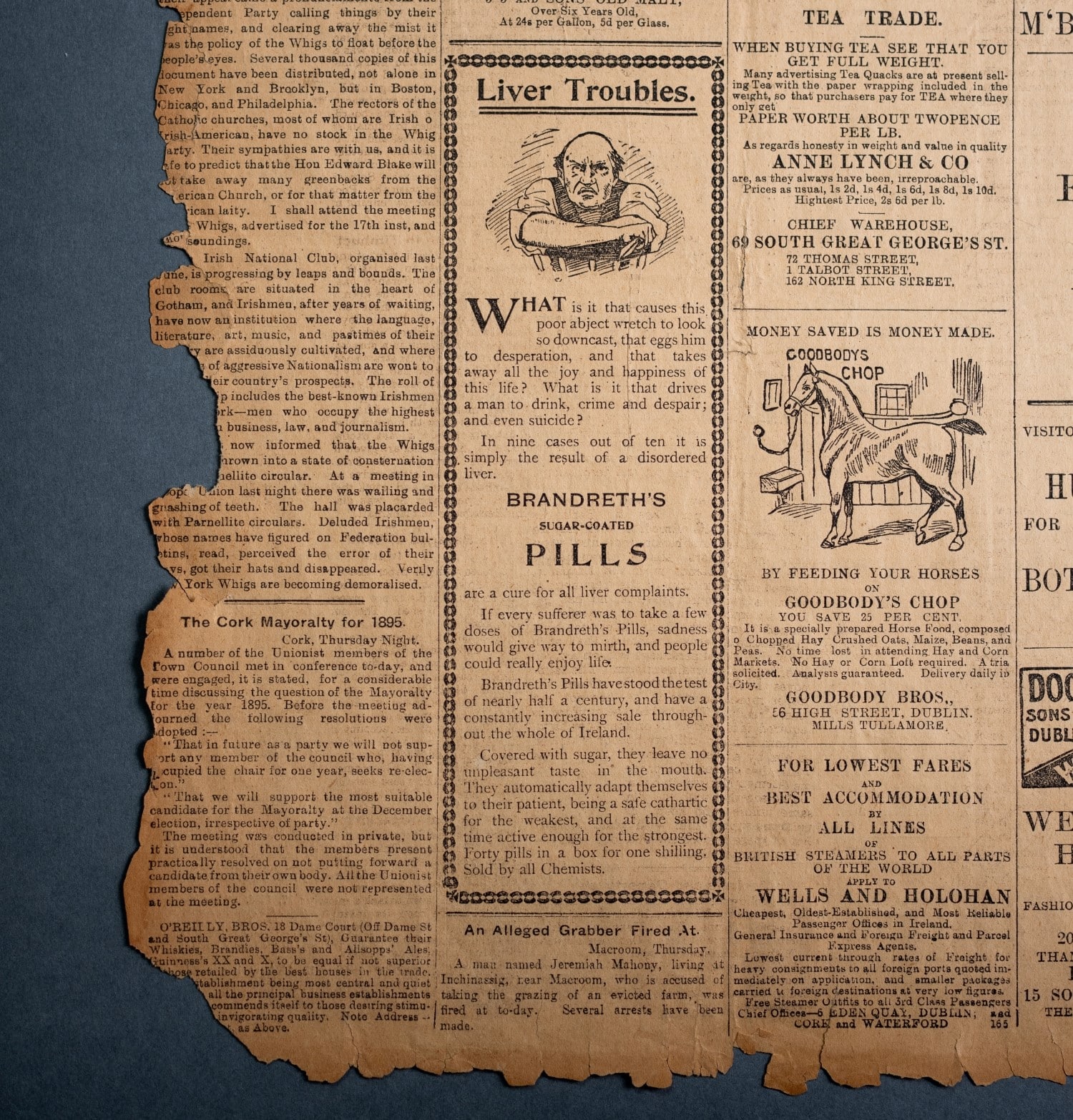Brandreth’s Pills – 1894 Evening Herald



This ad for Brandreth’s Pills, found in the 19 October, 1894 Evening Herald, caught my eye when I found it in the archives and kicked off my hunt for interesting newspaper ads to do this research on. The illustration depicts a man who looks almost comically violent. He holds a knife and poses himself on a chair in an aggressive way; he is clearly the villain in the advert. The text asks, “What is it that causes this poor abject wretch to look so downcast, that eggs him to desperation, and that takes away all the joy and happiness of this life”? It answers itself almost immediately: “In nine cases out of ten it is simply the result of a disordered liver”. The text goes on to describe how Brandreth’s Pills can cure this “wretch” of his sadness. The advertisement is vague on what exactly the pills would cure, pointing out that “they automatically adapt themselves to their patient, being a safe cathartic for the weakest, and at the same time active enough for the strongest.”
Brandreth’s Pills were a largely popular “universal vegetable pill” made by Benjamin Brandreth, who had moved to America from the UK to sell his pills. Claiming the recipe was based on one his grandfather passed down, Brandreth believed that the root of all illness was constipation and sold this herbal remedy as a cure-all purgative. ‘Nostrums’ like this one – a medicine made by a non-medical person and which is usually ineffective – came into the American market after the Revolutionary War and had gained massive popularity by the mid-1800s. At a time when rapid industrialisation caused high urban mortality rates, many were seeking nostrums to keep them away from the brutal medical practices at the time. On top of this, lack of medical regulation meant that the market was ripe for nostrums to gain traction, offering the solution for any ailment as well as preventative cures for anything and everything.
Nostrums often advertised their stories in a similar manner to Brandreth’s; old folk remedies passed on through a family but now commercialised and packaged conveniently for mass consumption. This advertisement for Brandreth’s Pills doesn’t necessarily promise a cure for any specific illness but does prey on the reader’s fear of becoming unhappy, angry, and violent. Without the pill, what would stop the reader from one day waking up and being affected by an unknown liver illness which causes one to be an “abject wretch”?
Relying heavily on advertising, these nostrums were at the forefront of modern advertising strategies as we know them. In many ways, they defined how companies used fear-mongering or aspirational stories to sell their products rather than actual tangible promises. In an oversaturated market, Brandreth’s rose to the top using advertisements like this one. In 1849, the company spent 100,000 USD on advertising, which today is equivalent to around 4 million USD.
Brandreth’s was so popular, it were even used in Edgar Allen Poe’s 1850 short story, Some Words with a Mummy, to illustrate the irony of progress. In the story, a group of men bring a mummy back to life and have a conversation about what scientific progress has been made since the time of ancient Egypt. In the end, they only come up with two inventions: Ponnonner’s Lozenges and Brandreth’s Pills. Outside of exposing the absurdity of the contemporary understanding of the past, this story reveals the popularity of Brandreth’s Pills at the time.
By Mazie Smallidge, researched and written for #OpentheArchive, June 2025.
